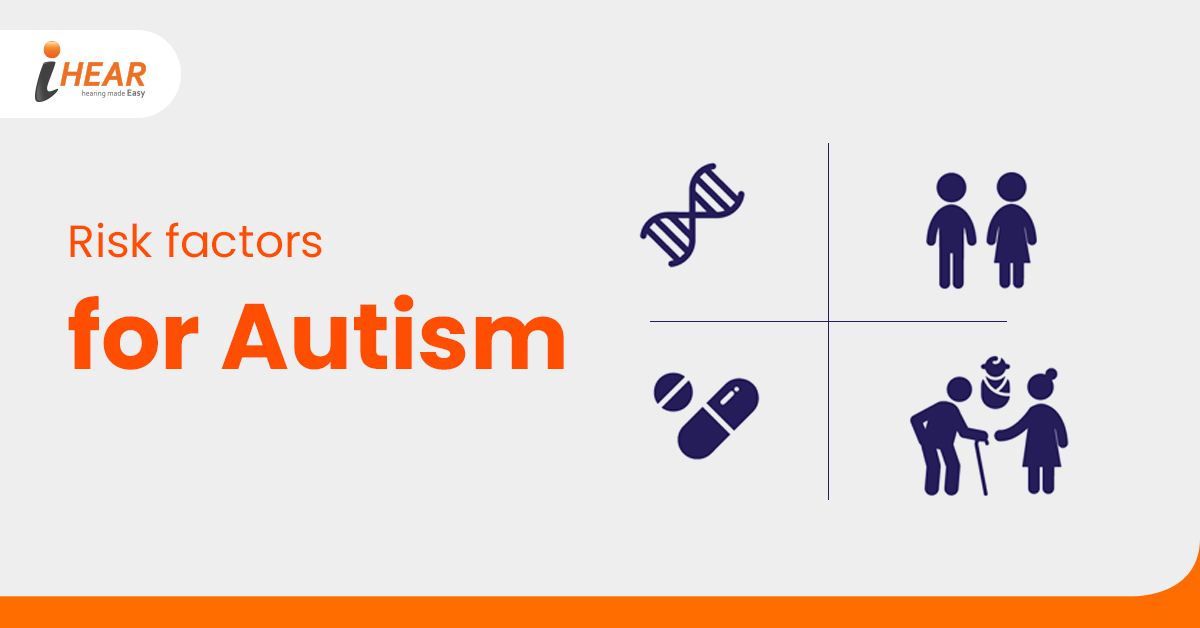What are the risk factors for autism?
- What is autism?
Autism, or Autism Spectrum Disorder (ASD), is a neurodevelopmental disorder that affects social interaction, communication, behavior, and sensory processing. It is a spectrum disorder, meaning that it encompasses a wide range of challenges and strengths, and individuals with autism may present with varying degrees of impairment across different areas.
Key features of autism include:
Social Challenges: Difficulty in understanding and engaging in social interactions is a hallmark of autism. Individuals with autism may struggle with nonverbal communication cues such as facial expressions, body language, and gestures. Establishing and maintaining relationships may be challenging.
Communication Differences: Impairments in communication can manifest in various ways. Some individuals with autism may have delayed language development, while others may have a rich vocabulary but struggle with pragmatic language (the social use of language). Nonverbal communication, such as gestures and facial expressions, may be limited or absent in some cases.
Repetitive Behaviors and Interests: Many individuals with autism engage in repetitive behaviors or activities. This could include repetitive movements (e.g., hand-flapping or rocking), insistence on sameness or routines, and intense preoccupation with specific interests or topics.
Sensory Sensitivities: Heightened or diminished sensitivities to sensory stimuli are common in individuals with autism. This can include hypersensitivity or hyposensitivity to stimuli such as lights, sounds, textures, or smells. Sensory sensitivities may lead to discomfort or avoidance behaviors.
Strengths and Challenges: The term “spectrum” in Autism Spectrum Disorder emphasizes the diversity of characteristics and strengths within the autism community. While some individuals may face significant challenges in communication and daily functioning, others may excel in specific areas, such as mathematics, music, or visual arts.
It’s important to recognize that autism is a lifelong condition, and there is no cure. However, with appropriate interventions and support, individuals with autism can lead fulfilling lives. Early intervention, tailored educational approaches, behavioral therapies, and support from families and communities contribute to the well-being and development of individuals with autism.
The exact cause of autism is not fully understood, but a combination of genetic, neurological, and environmental factors is believed to contribute to its development. Diagnosing autism typically involves a thorough assessment by healthcare professionals, including developmental pediatricians, psychologists, and speech-language therapists.
Understanding and acceptance of neurodiversity, which recognizes and values differences in neurological functioning, are essential for creating inclusive and supportive environments for individuals with autism. Advocacy for autism awareness, research, and accessibility to appropriate resources contributes to building a more inclusive society for everyone, regardless of their neurodevelopmental profile.
Risk factors for autism
The exact cause of autism spectrum disorder (ASD) is not fully understood, but a combination of genetic and environmental factors is believed to contribute to its development. Here are some recognized risk factors associated with an increased likelihood of autism:
- Genetics: Autism tends to run in families, suggesting a strong genetic component. If a family has one child with ASD, there may be an increased risk for other siblings.
- Advanced Parental Age: Research has shown that the risk of having a child with autism increases with advanced parental age, especially in older fathers.
- Certain Genetic Conditions: Some genetic syndromes and chromosomal abnormalities are associated with a higher risk of autism. Examples include fragile X syndrome, Rett syndrome, and Down syndrome.
- Preterm Birth: Babies born prematurely or with low birth weight may be at a higher risk of developing autism.
- Prenatal Factors: Certain prenatal factors have been linked to an increased risk of autism, including exposure to certain drugs, maternal infections during pregnancy, and complications during childbirth.
- Gender: Boys are more likely to be diagnosed with autism than girls. The reasons for this gender difference are not entirely clear.
- Having Older Parents: Children born to older parents, particularly older fathers, may have a slightly higher risk of autism.
- Certain Medications during Pregnancy: Some studies have suggested a potential link between the use of certain medications during pregnancy and an increased risk of autism. However, the evidence is not conclusive, and more research is needed in this area.
It’s essential to note that these risk factors increase the likelihood of autism but do not guarantee that a child will develop the condition. Autism is a complex neurodevelopmental disorder, and multiple factors likely interact to contribute to its onset. Additionally, many individuals with autism do not have identifiable risk factors, and the majority of individuals with known risk factors do not develop autism.
Early intervention and support can significantly improve outcomes for individuals with autism, regardless of the presence of risk factors. If there are concerns about a child’s development, Autism treatment in Kolkata consulting with healthcare professionals for a comprehensive evaluation is crucial.

